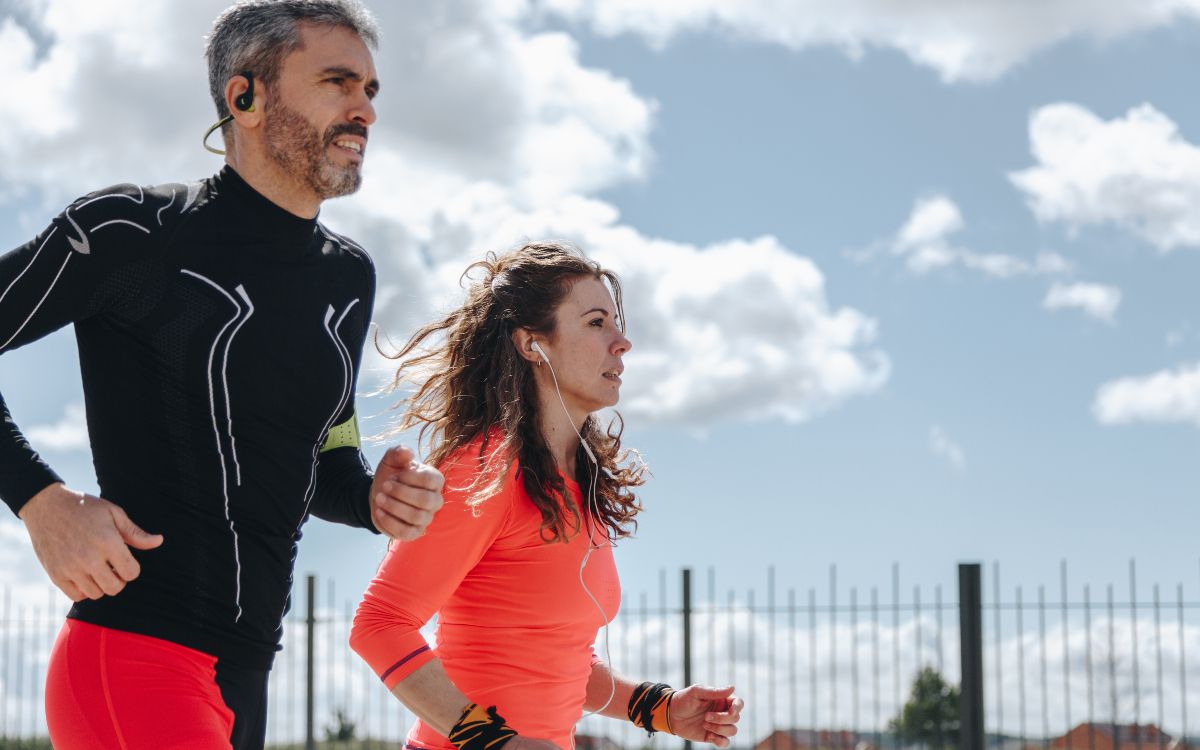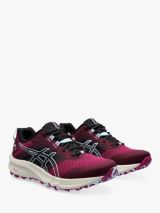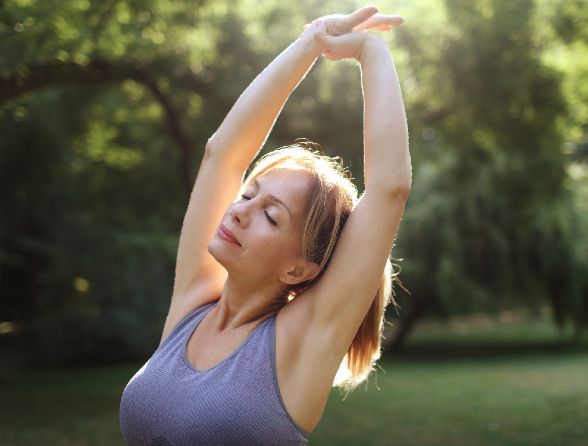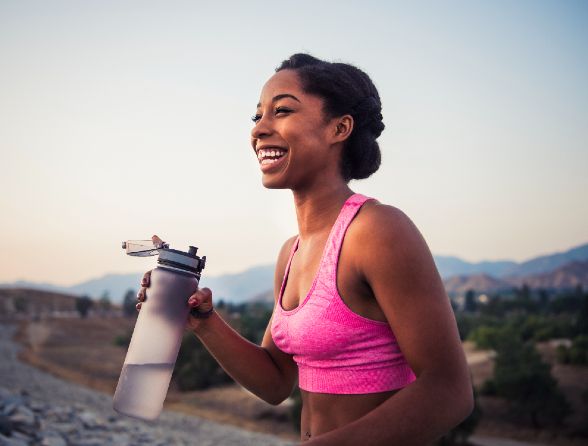The beginner’s guide to running: 7 steps to finding your feet
Lace up your trainers... our kit, tips and tech will help turn you into a runner in no time
Running: it’s as simple as putting one foot in front of the other. If you haven’t run since your last PE lesson, it can also be a little daunting. Worry not: we have all the kit you could ever want – plus expert advice – to help you get started.
‘Running is amazing for your mental health and wellbeing,’ says elite marathoner Alix Ramsier, who founded AJ's Run School with fellow championship runner Jo Vickers. ‘It’s a great way to get moving and give your day a sense of accomplishment when motivation might be low.’
‘We really do believe in the power of running. And we believe everyone has the ability to be a runner, no matter how fast or slow you think you are. You might start a run feeling anxious, worried and frustrated at life, but you’ll finish feeling a lot better and with a clearer mindset. At times, it’s almost meditative.’
Set yourself a goal
Having a goal to work towards is the best way to keep motivation for running high. For beginners, 5K is a challenging but achievable target to set your sights on – if you’re a complete newbie, you can expect to get there in six to nine weeks.
‘We aim to get all our runners to complete a 5K run in six weeks,’ says Alix. ‘Many now run the distance on a regular basis, and some go even further!’
Make a plan
Once you know what you want to achieve, get out your calendar and block out those training sessions. If you’re starting from scratch, the NHS suggests beginning with three runs a week, using a run/walk or run/rest strategy.
‘It’s best to start with simple, small goals,’ says Alix. ‘That might be running to the end of the road without stopping, having a rest and running back. When you can do that, try skipping the rest break and running back without stopping.
‘Or it might be walking for two minutes, followed by running for one minute, over the course of 20 to 30 minutes, then changing that to two minutes of running and one minute of walking. Whatever objective you set yourself, try to keep improving on it. Keep it exciting and keep setting manageable goals.’
Find support
If you live with a friend or partner, get them involved – people who exercise with someone else train more often and work harder than those who go it alone. You could even get the kids in on the act, turning your run/walk into a fun family activity.
If you’re going it alone, joining a running club or online running community will allow you to meet like-minded people with whom you can share experiences, which can give you the boost you need to stay on track. ‘Running can be pretty hard at times, but Jo and I have built a very special friendship through running and we’ve created an environment with running together at its heart,’ says Alix.
You can search for a running group near you on the RunTogether website, or find online support on Facebook groups such as Run Mummy Run. If you decide to follow the Couch to 5K programme using the Public Health England podcast or app, the NHS Couch to 5K community is another great place to find support and get advice from fellow runners.
Wear the right kit
The right gear is key. Look for lightweight, breathable wicking fabrics (this means they’ll draw the sweat away from your skin as you run). Running tights offer extra support and protection when there's a nip in the air. Throw on a no-chafe tank top or T-shirt (and a good sports bra) and you’re good to go. Feeling the cold? Add a wicking workout hoodie or running jacket.
‘Invest in some good trainers,’ says Alix. ‘Too often, people will run in the wrong footwear, leading to unneccessary injuries.’ Listen to your body and choose the ones that feel most comfortable. Asics trainers are perfect for beginners: they’re made with structured cushioning for a bouncy feel. Team with supportive, vented running socks to keep chafing and clamminess at bay.
Pick your playlist
Listening to music while you run can boost your endurance by up to 15%. If you want to go harder and faster, choose tracks that have about 145 beats per minute. Think Gimme Some Lovin’ by The Blues Brothers (144 BPM) and Change Your Mind by The Killers (147 BPM).
Made for pavement-pounding music lovers, the latest wireless sports headphones are designed to withstand rain and sweat and stay put under all conditions. Pair them with a fitness tracker or smart watch and you can go hands-free.
Get appy
Perfect if you’re new to running (even if you’re not new to exercise), the free NHS Couch to 5K app will guide you through your first nine weeks of training, step by step. MapMyRun and Strava can help you find new routes and track your performance, while RockMyRun dishes up DJ-curated playlists that adjust to your step cadence or heart rate.
Keep a record of all those steps with a fitness tracker or smart watch. The Fitbit Sense 2 has a built-in heart rate tracker and uses connected GPS to show you your pace, distance and route in real time. For a truly hands-free experience, the Apple Watch Ultra 2 includes built-in GPS and lets you stream songs straight to your wrist, and even make calls.
Stay safe
Running is great for your health, but be careful not to overdo it. ‘Staying injury-free at the start can be hard,’ Alix warns. ‘You‘ll be using muscles that haven‘t been used for some time, which can lead to niggles and pain.’
Stick to three runs a week, and give yourself at least one day off to recover between runs. ‘Don't try to do too much too soon,' says Alix. ‘Take things slowly at the start, and remember to warm up. You need to make sure the body is ready to move, or you'll easily pull a muscle.’
If you want to become a better runner, R&R is as crucial as actually running. ‘Listen to your body,’ Alix advises. ‘If something is hurting, rest for a few days. And remember, ice is your friend – we swear by ice packs and frozen peas for any niggles.’
It’s also important to include some active recovery days in your training plan: exercises such as strength training, cycling, yoga and Pilates can actually make you a better runner. Weighted squats and deadlifts can help strengthen the glute and hip muscles to guard against injury and also to increase power and speed. Pilates builds core strength and helps with speed, while yoga releases post-run tightness in the hamstrings, quads and hip flexors. Using a foam roller before and after a run can also be beneficial. Aim to roll your calves, quads, glutes and TFL (outside hip muscle) for 30 seconds each.
On your marks…
The best running gear
We recommend you consult your doctor before beginning a new exercise programme.

























